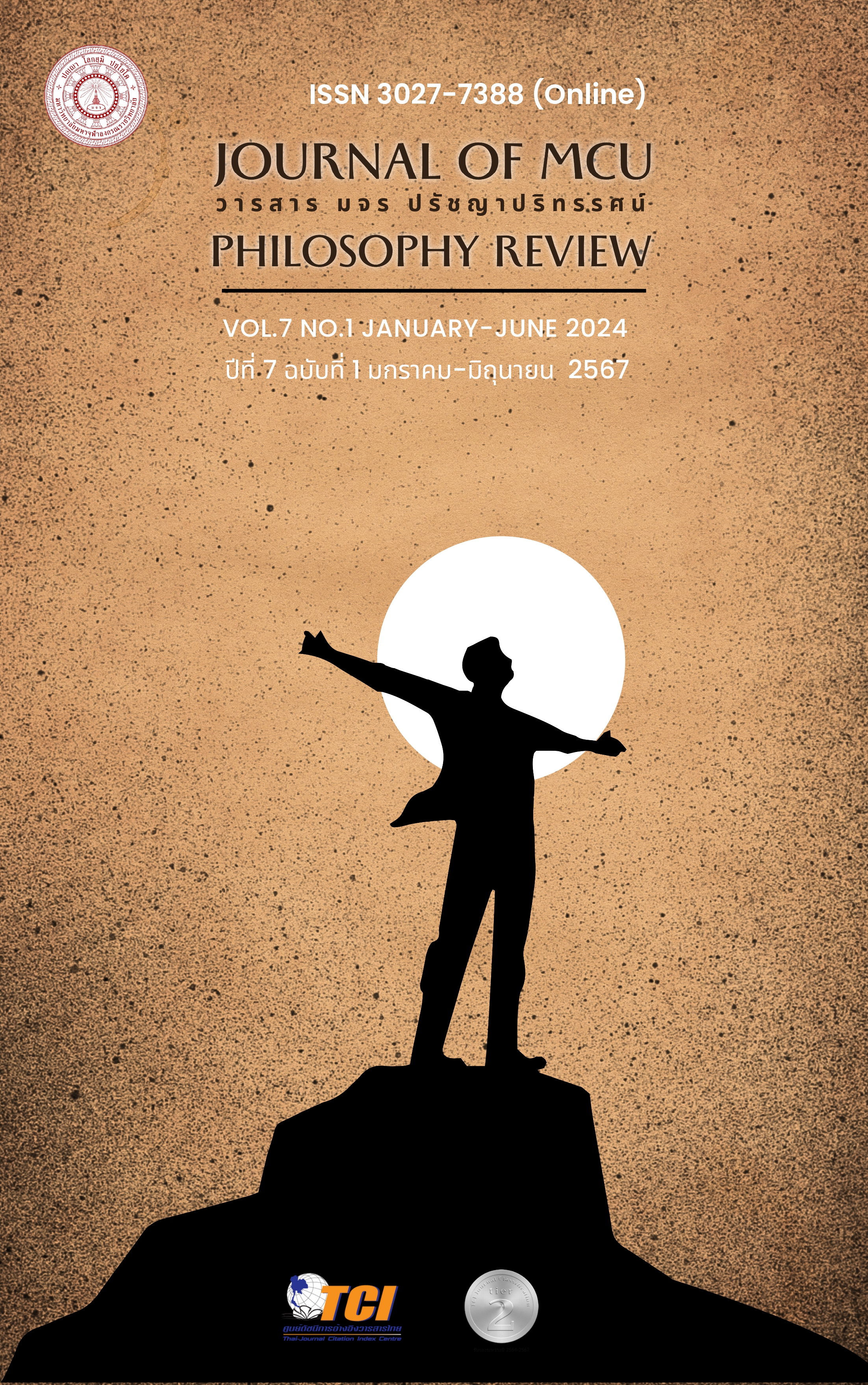ข้อโต้แย้งเรื่องสังสารวัฏและกฏแห่งกรรมในคัมภีร์ภควัทคีตา
Main Article Content
บทคัดย่อ
บทความวิจัยเรื่อง “แนวคิดเรื่องสังสารวัฏและกฏแห่งกรรมในภควัทคีตา” มีวัตถุประสงค์เพื่อวิเคราะห์ข้อโต้แย้งเรื่องสังสารวัฎและกฎแห่งกรรมในคัมภีร์ภควัทคีตา งานวิจัยนี้เป็นงานวิจัยเชิงคุณภาพใช้การศึกษาเอกสาร ผลการศึกษาพบว่า สังสารวัฎในคัมภีร์ภควัทคีตาเป็นสถานที่เชื่อมโยงระหว่างอัตตากับพรหมันจะผสมผสานกันผ่านการะทำ การกระทำของมนุษย์ในสังสารวัฎได้นั้นจึงสามารถจำแนกได้ 2 แบบคือตนเองเป็นผู้กระทำจะต้องรับผลของการกระทำนั้น แต่หากมองว่าตนเองไม่ใช่ผู้กระทำ ก็จะเป็นหน้าที่ของพระเป็นเจ้าเป็นกำหนด มนุษย์จึงมีอิสระจากการกระทำในแง่ที่พระเป็นเจ้าเป็นผู้กำหนด แต่การกระทำใดที่ทำด้วยความรู้สึกหรือความต้องการ มนุษย์จะต้องรับผลจากการกระทำนั้น แต่หากมนุษย์กระทำตามคำสั่งศักดิ์สิทธิ์จากพระเป็นเจ้า ก็จะไม่มีผลต่อผู้กระทำ แต่เป็นพระเป็นเจ้าจะต้องเป็นผู้รับผิดชอบต่อผลนั้นแทน
Article Details

อนุญาตภายใต้เงื่อนไข Creative Commons Attribution-NonCommercial-NoDerivatives 4.0 International License.
บทความที่ได้รับการตีพิมพ์เป็นลิขสิทธิ์ของวารสาร มจร ปรัชญาปริทรรศน์
ข้อความในบทความที่ได้รับการตีพิมพ์ในวารสาร ถือเป็นความรับผิดชอบของผู้เขียนบทความ และข้อคิดเห็นนั้นไม่ถือว่าเป็นทัศนะและความรับผิดชอบของกองบรรณาธิการวารสาร มจร ปรัชญาปริทรรศน์
เอกสารอ้างอิง
กฤษณไทวปายนวยาส. (2561). ภควัทคีตา. แปลโดย สมภาร พรมทา. กรุงเทพมหานคร: สำนักพิมพ์วารสารปัญญา.
กีรติ บุญเจือ. (2522). ปรัชญาอินเดีย. กรุงเทพมหานคร: ประยูรวงค์.
ทองหล่อ วงษ์ธรรม.(2554). จริยศาสตร์เบื้องต้น: มนุษย์กับอุดมคติและมตารการทางศีลธรรม. กรุงเทพมหานคร: โอเดียนสโตร์.
สุนทร ณ รังษี. (2521). ปรัชญาอินเดีย : ประวัติและลัทธิ. กรุงเทพมหานคร: แพร่วิทยา.
อดิศักดิ์ ทองบุญ. (2545). ปรัชญาอินเดียร่วมสมัย. กรุงเทพมหานคร: ราชบัณฑิตยสถาน.
เอ.ซี.บัคธิเวดันธะ สวะมิ พระบุพาดะ. (1971). ภควัตคีตา ฉบับเดิม. แปลโดย กฤษณะ สังคีตทาน. กรุงเทพมหานคร: มูลนิธินานาชาติเพื่อคริชณะจิตสำนึก.
J.A.B.Van Buitenen. (1968). Ramanuja on the Bhagavadgita: A condensed rendering of his Gitabhasya with copious Notes and an Introduction. Delhi: Motilal Banarsidass.
Sri Sankaracharya. (1901). The Bhagavadgita. trans. by A. Mahadeva Sastri. 2nd edition. Mysore: The G.T.A. Printing Works.
S.Radhakrishnan. (2014). The Bhagavadgita. Uttar Pradesh: HarperCollins Publishers.


